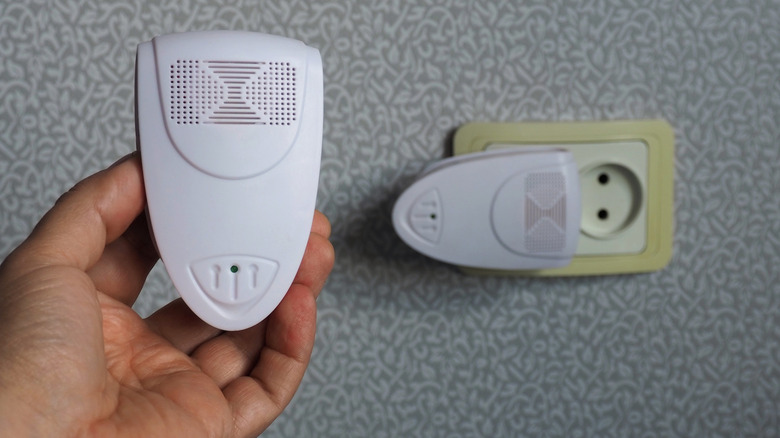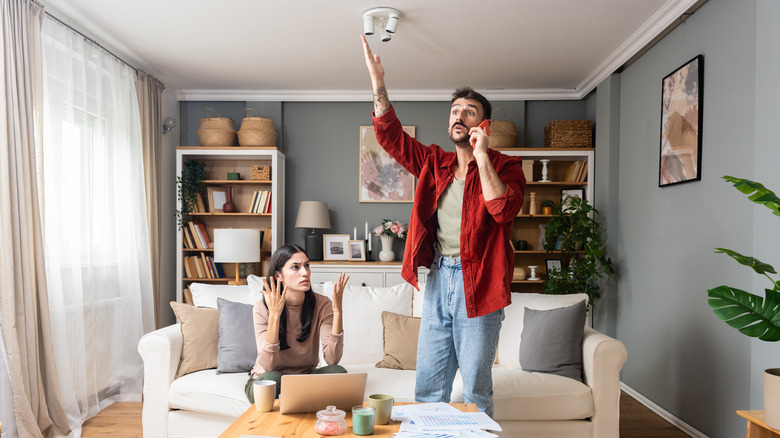The Major Ultra Sonic Pest Control Downside You May Not Be Considering
Ultrasonic pest control devices have exploded in popularity over the last decade, becoming a common sight in homes, apartments, offices, and even garages. People love them because they promise to repel mice, roaches, ants, and other unwanted guests without the messy cleanup, dangerous traps, or any foul-smelling chemicals. All you need to do is plug them into an outlet — or in the case of outdoor versions, mount them to your porch or patio — and let the technology do the work. These devices emit high-frequency sound waves that are meant to be irritating to pests, but harmless to humans, creating an invisible barrier that bugs and rodents supposedly won't cross. For many, it feels like a natural way to repel bugs and a more humane alternative to traditional methods for controlling a pest problem.
But here's the part that you may not have considered: Those sound waves don't just stop politely at your walls or your fence line. In reality, the ultrasonic frequencies can travel well beyond the area that you're targeting. While many adults may not notice the noise — because the high frequencies are simply beyond their range of hearing — some people can definitely hear it. This is especially true for young people and those with sensitive hearing at any age. Pets and wildlife will likely be affected by your ultrasonic pest control devices as well.
Why your pest control may be annoying your neighbors
The reason that ultrasonic pest control devices can irritate your neighbors comes down to how sound waves typically behave. High-frequency noises don't travel as far as low bass noises, but they can still move through solid objects and freely through the open air. Indoors, they can find their way into neighboring apartments through thin walls or ventilation work, driving sensitive-eared individuals nearby crazy. Without any physical barriers to stop the sound outdoors, it will carry towards neighboring properties and can negatively affect the homeowners surrounding you. This means that your humane pest removal method may actually be hurting those around you, and you would have no idea.
Younger individuals are far more likely to detect these sounds because human hearing gradually loses sensitivity to higher frequencies with age. The devices themselves typically operate at sound frequencies above 20,000 Hz, which is beyond the average adult's hearing range. However, a tone that's completely inaudible to a middle-aged adult might be piercingly clear to a teenager, child, or even a young adult on the other side of the fence. Some people with naturally acute hearing can also pick them up, regardless of age. For those who can hear them, the constant sound pressure isn't just annoying; it can trigger ringing in the ears, headaches, dizziness, and trouble concentrating.
Dogs, cats, rabbits, and other small animals may also experience discomfort or distress with these devices, so this is one pest deterrent you might want to reconsider if you have a pet. Neighbors with pets may not be major fans of your pest control method either, especially if it is driving their dog or cat wild. If they do not realize the source of the sound, it may cause some unrest in your neighborhood.

